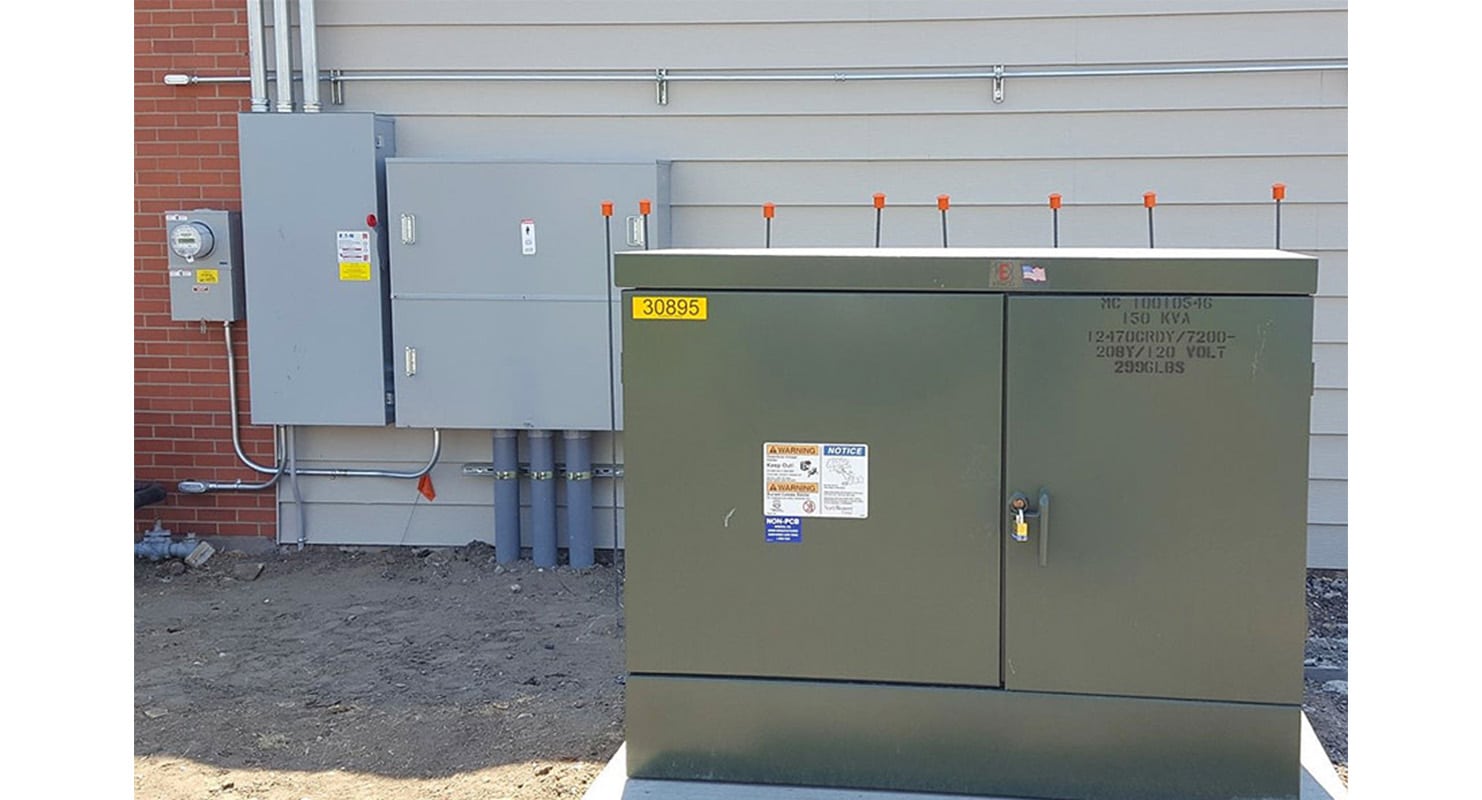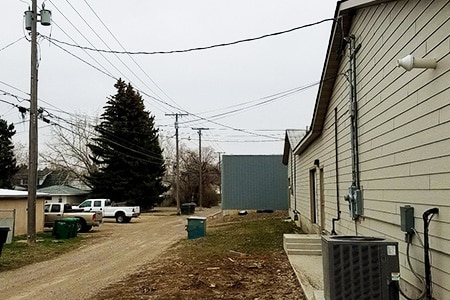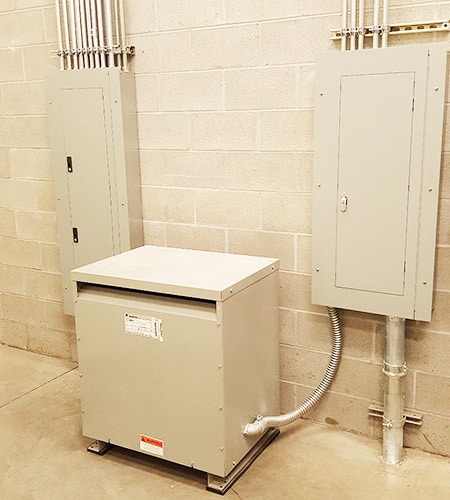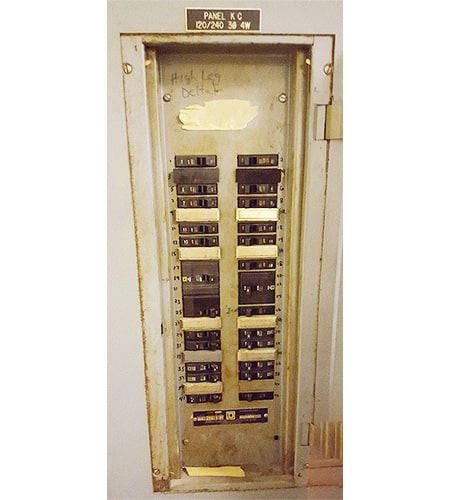

Building Power Distribution: What Configuration is Best?
By Brian McDivitt, PE, and Ryan Maroney, PE
Many devices and equipment we use in our daily tasks require a power distribution system that makes 120V available for users. This 120V power can be achieved by a single-phase or a three-phase (wye or split-phase delta) configuration, but is one configuration better than another for your building? Ultimately, the configuration used for your building depends on your equipment needs, overall building electrical load, and what is most economical.
Before stepping through the different configurations, let’s look at some essential components to ensure effective and safe power distribution.
- Grounding. A properly grounded system is important to ensure protection for both system users and personnel maintaining the system. While current typically travels through an intended equipment load, sometimes a loose or disconnected wire causes current to take an unintended path, such as metal, on a piece of equipment. A grounded system provides a path to the earth for the current to dissipate energy safely.
- Neutral. As Part 2 of this series illustrates, having a neutral wire is another important consideration in a power distribution configuration. Most electrical system designs include access to a neutral anywhere equipment may need it. While single-phase 120V circuits include a neutral by default to form a safe and complete circuit, multi-pole circuits do not always have a neutral connection. However, certain multi-pole equipment does have 120V components (typically controls) that require the presence of a neutral.
Consider a typical residential clothes dryer, which may or may not require a neutral. The dryer plug configuration makes this distinction and determines what receptacle is needed to power the dryer. Many older dryers require a 3-prong NEMA 10-30R receptacle (no neutral), while most new dryers require a 4-prong NEMA 14-30R receptacle (neutral included). The latter option provides a safer system. Because a dryer is sometimes located in a wet location, the insulated neutral provides the grounded current path instead of the equipment ground itself. In the late 1990s, the National Electric Code was updated to require 4-prong dryer receptacles in all new construction installations.


Single-Phase Configuration
Although smaller, localized utility distribution may be via single-phase, such as throughout a residential subdivision or rural area, utilities use three-phase power for all large-scale transmission. To remain effective and efficient, loads of a three-phase system must remain balanced. Typically, three-phase transmission systems are large enough to absorb small imbalances. However, this is one consideration in keeping single-phase electrical building services small since a single-phase service inherently creates an imbalance in a three-phase system. Because of this, single-phase services are usually limited to residential and small non-residential buildings, and utilities often cap the maximum size of a single-phase service at a certain amperage. Modern single-phase configuration designs include a ground to provide safe interaction with the system.

Three-Phase Configurations
Simply put, larger equipment and more equipment mean more power usage and three-phase configurations provide that power more efficiently than single-phase. A three-phase configuration also allows the electrical designer to assist the utility company in arranging loads to balance connected loads across the phases. Typical three-phase configurations are outlined below, along with their design considerations.
208Y/120V
- Most basic three-phase system and most inexpensive wye system
- Ideal for small commercial services that are too large for a single-phase service
- Provides basic 120V circuits without the use of additional step-down transformers
- Provides higher voltage (208V) for larger equipment using either single- or three-phase power
- Presents voltage drop issues with longer circuits, if the wire is not properly sized to accommodate for voltage drop
480Y/277V
- Typically used only for larger buildings, because of larger power consumption
- Additional distribution equipment (step-down transformers and distribution panels) is required to provide 120V circuits within the building
- Reduces utility service size, compared to 208Y/120V, because higher voltage provides lower amperage
- Ideal for reducing voltage drop and wire size over long distances within a building or site

120/240V Delta
- Inefficient and unstable use of power
- Creates unbalanced loads across phases
- Dangerous if improperly labeled (A circuit between the high-leg and the neutral can be mistaken as 120V to ground when it is 120V multiplied by the square root of 3. See Part 2 of this series for this distinction.)
- Usually avoided in modern electrical designs. Sometimes an electrical utility will allow this system in limited applications to achieve 3-phase power, such as serving a large horsepower pump at a remote location.
What Do You Need?
Do you have an electrical service that needs to be upgraded, possibly due to a building addition or a remodel? Are you constructing a new building and not sure what configuration of power distribution to have? While many of the considerations presented in this series can help improve understanding of power distribution configurations, our electrical engineers are here to assist in this aspect of building design to help owners find which configuration is best for their buildings.


